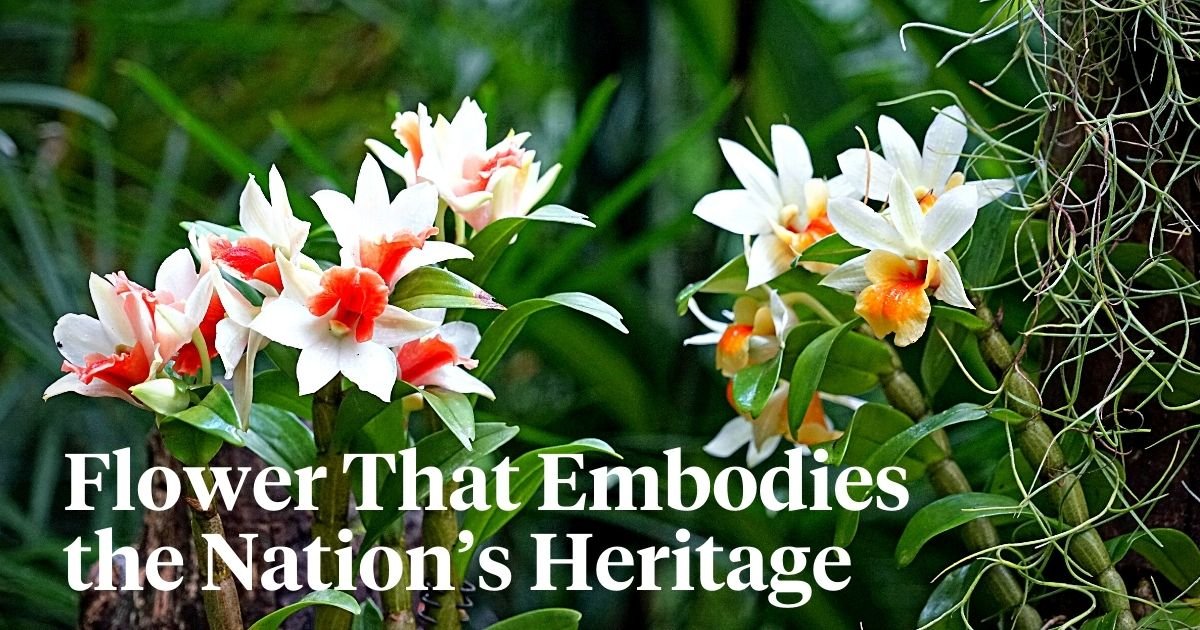Flowers have long been celebrated for their beauty, fragrance, and the joy they bring into our lives. Beyond their aesthetic appeal, flowers often hold deep symbolic meanings and cultural significance. Among these, national flowers stand out as emblems of pride and identity for countries around the world. This blog delves into the significance of national flowers, the process through which they are chosen, and examples of national flowers from ten different countries.
The Significance of National Flowers
National flowers are more than just botanical selections; they are potent symbols that represent the spirit, culture, and heritage of a nation. These flowers are often chosen because they hold historical significance, are endemic to the country, or symbolize characteristics that the nation prides itself on.
1. Cultural Representation: National flowers often have deep roots in the folklore, traditions, and cultural practices of a country. They are featured in festivals, national holidays, and other important events. For example, Japan’s national flower, the cherry blossom, is celebrated during the annual Hanami festival, where people gather to appreciate the fleeting beauty of the blossoms.
2. Symbol of National Identity: Just like a flag or a national anthem, a national flower can evoke a sense of belonging and patriotism among citizens. It becomes a part of the nation’s identity, representing its values and spirit. The rose, as the national flower of the United States, symbolizes love, beauty, and courage. Similarly, as the national flower of Canada, the Maple Leaf symbolizes strength and endurance, and is proudly featured on Canada’s flag.
3. Biodiversity and Natural Heritage: National flowers can also highlight a country’s unique flora and commitment to conserving its natural heritage. The Blue Poppy of Bhutan is not only beautiful but also endemic to the region, showcasing Bhutan’s rich biodiversity.
How Countries Choose Their National Flowers
Selecting a national flower is a process that can involve governmental decisions, public voting, or the influence of cultural and historical factors. Here are some common ways countries decide on their national flowers:
1. Historical and Cultural Significance: Flowers that have historical importance or are deeply embedded in the country’s cultural practices are often chosen. The lotus, India’s national flower, is a sacred symbol in Indian religions and has been an important part of Indian culture for centuries.
2. Native Flora: Countries often select flowers that are native and unique to their region. This not only highlights the nation’s natural beauty but also emphasizes the importance of conserving local plant species. South Africa’s King Protea, for example, is indigenous to the country and symbolizes diversity and beauty.
3. Public Opinion: Some nations involve their citizens in the decision-making process through public voting or surveys. This democratic approach ensures that the chosen flower resonates with the population. In 1961, Ireland selected the shamrock as its national symbol, a plant associated with St. Patrick and deeply ingrained in Irish culture.
4. Symbolic Representation: Flowers that embody certain qualities or virtues admired by the nation are often selected. For instance, the Edelweiss, Austria’s national flower, symbolizes purity, bravery, and love, reflecting the values cherished by Austrians.
Examples of National Flowers from Around the World
Here are ten examples of national flowers, each with its unique significance and story:
1. Japan – Cherry Blossom (Sakura): The cherry blossom represents the transient nature of life and beauty. It is celebrated with the Hanami festival, where people gather to enjoy the blooming trees. As a gesture of diplomacy, Japan often gifts Cherry Blossom trees to friendly nations to let them enjoy these blooms as spring comes along. There is a term for this arrangement, called the “Cherry Blossom Diplomacy”. Places like Kariya Park, Centennial Park and High Park in Ontario are testament to the friendship between Japan and Canada.
2. India – Lotus (Nelumbo nucifera): The lotus symbolizes purity, enlightenment, and rebirth. It holds a sacred place in Indian religions and cultural practices.
3. United States – Rose (Rosa): The rose is a symbol of love, beauty, and courage. It was designated the national flower in 1986. If you’d like to experience the purity and majesty of the Rose anywhere in Ontario then you can simply order a fresh bouquet online and have it delivered to you. For example, if you live in Oshawa then you can simply order flowers online in Oshawa using the services of the multitude of florists delivering fresh flowers across Southern Ontario, such as Apple Blossom Flowers Inc. Given the rise of ecommerce and the cold supply chain, the entire process has become a breeze and ensures delivery of the freshest flowers straight to an address of your choice!
4. France – Lily (Lilium): The lily is associated with French royalty and purity. It is often depicted in the Fleur-de-lis emblem.
5. South Africa – King Protea (Protea cynaroides): The King Protea symbolizes diversity, transformation, and courage. It is indigenous to South Africa.
6. Canada – Maple Leaf (Acer): The maple leaf is a symbol of strength and endurance. It has been a Canadian symbol since the 18th century and is featured on the national flag.
7. Ireland – Shamrock (Trifolium dubium): The shamrock, associated with St. Patrick, symbolizes luck and Irish heritage.
8. Sri Lanka – Blue Water Lily (Nymphaea stellata): The Blue Water Lily is significant in Buddhist practices and represents purity and enlightenment.
9. Mexico – Dahlia (Dahlia pinnata): The dahlia is native to Mexico and symbolizes elegance and dignity. It was declared the national flower in 1963.
10. Australia – Golden Wattle (Acacia pycnantha): The Golden Wattle symbolizes unity and resilience. Its golden flowers represent the spirit of the Australian people.
Conclusion
National flowers are powerful symbols that encapsulate the essence of a nation’s identity, culture, and natural beauty. They connect people to their heritage, inspire national pride, and remind us of the unique and diverse flora that enriches our world. Whether through historical significance, cultural representation, or democratic selection, these flowers stand as enduring emblems of the countries they represent.
